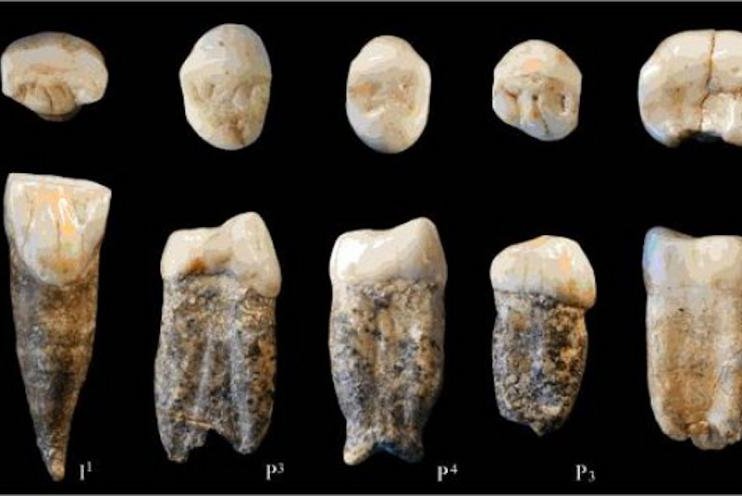Scientists analyzed six original fossil teeth belonging to Peking Man. Photo by Xing Song, et al./Scientific Reports
Feb. 1 (UPI) -- Scientists have for the first time analyzed the only original remains of Peking Man, the Homo erectus specimen discovered in China in the 1920s.
In a paper, newly published in the journal Scientific Reports, scientists with the National Research Center on Human Evolution in Spain detailed six fossilized teeth belonging to Peking Man.
Peking Man was originally recovered from a fossil-rich Middle Pleistocene site called Zhoukoudian. During the Second World War, most of Peking Man and other fossils recovered from Zhoukoudian were lost while being shipped from China to the United States.
Later, six teeth were recovered, but the remains haven't been analyzed until now.
"Since they were lost, for research on the fossil humans found at the site during the 1930s, plaster replicas of very poor quality have been used, as well as the descriptions and sketches that the researcher Franz Weidenreich left us," CENIEH researcher Bermúdez de Castro said in a news release.
Peking Man was first classified as a Sinanthropus pekinensis specimen. But the discovery of additional teeth in the 1950s helped scientists correctly identify Peking Man as belting to Homo erectus.
Peking Man lived some 750,000 years ago. And many scientists have interpreted much of modern human history in Asia as deriving from Peking Man's ancestry.
"All the human fossils found in what we call the Far East and in the current islands of Indonesia have been attributed systematically to Homo erectus," de Castro said.
However, variation among hominin fossils found throughout China suggests the evolution of Homo erectus and its relatives wasn't so straightforward.
The latest analysis of Pekin Man's teeth revealed similarities between fossils found at Zhoukoudian and other Middle Pleistocene sites in China. But the research also points to differences between the dental structures of Peking Man and Homo erectus.
Scientists hope their work will help researchers more accurately position Peking Man within the context of hominin species in Africa, Asia and Europe, and offer new insights into the evolution of early humans in the Far East.















